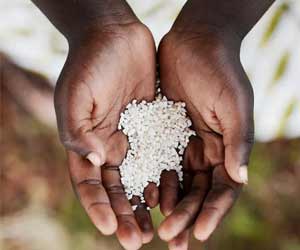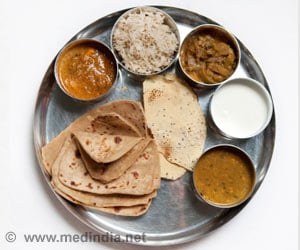A new study exploring the associations between Indigenous food consumption, and malnutrition in four vulnerable tribal Communities in Jharkhand, India.

‘Interventions promoting foods that are native to each region, and increasing dietary diversity have the potential to address malnutrition in tribal communities.’





Despite their access to biodiverse resources, the tribal communities in India have a compromised nutritional status and a dismal quality of life owing to factors such as geographical isolation, financial insecurity, poor literacy, suboptimal living conditions, and poor health and social services.According to the National Family Health Survey (2015–2016), the prevalence of chronic energy deficiency (CED) and anemia among women aged 15–49 years is higher in the tribal population compared to the general population.
For generations, Indigenous Peoples’ traditional food systems have maintained human health and natural environments. However, these biodiverse resources may not have received enough attention during the state's land-use planning and implementation, economic development, and biodiversity conservation.
Contribution of Indigenous Foods to Address Malnutrition in Indian Tribal Communities
Therefore, dietary diversification [a strategy involving the incorporation of diverse food groups in a diet to improve micronutrient intake], along with a special focus on homestead food production and Indigenous food (IF) consumption, could improve health and nutritional well-being and may also offer social, economic, and environmental benefits for tribal communities.This new study captured seasonal dietary intake conducted in 11 villages of the Khunti district, Jharkhand. Household surveys supplemented with 2-d 24-h dietary recall and anthropometric assessments on 1 randomly selected woman per household were conducted.
The study found that while the tribal communities had traditional ecological knowledge about a variety of indigenous foods, the consumption of these foods among women and children in all communities was inadequate with poor nutrient intake.
Advertisement
A high prevalence of wasting, stunting, and low weight was observed in young children in all the tribes. It is possible to tackle undernutrition in these communities by implementing strategies such as agricultural extension programs that promote indigenous crop varieties and nutrition education sessions to increase dietary diversity using indigenous foods.
Advertisement
The easy availability of cheap ultra-processed foods in local markets was seen to create a shift in dietary patterns, and the promotion of hybrid seeds by local agricultural organizations led to reduced production of indigenous varieties.
Integrated Approaches toward Improved Nutrition Outcomes
The COVID-19 pandemic further jeopardized food security globally, with heightened threats for the most vulnerable, including smallholder farmers and rural indigenous populations. The pandemic significantly impacted food security, agricultural practices, and the availability and accessibility of indigenous foods.However, the study also identified potential resilience factors, against the impact of the COVID-19 pandemic on indigenous food systems such as accessibility to agricultural inputs like indigenous seeds, availability of family labor due to back migration, and access to diverse food sources.
It is recommended that in addition to increasing the demand for locally produced foods, it is important to promote the creation of community seed banks for distributing indigenous seeds, educating indigenous communities on sustainable farming methods to preserve local landraces and drought-resistant varieties, and supporting communities in establishing home gardens.
Nutrition education sessions that reinforce traditional ecological knowledge and raise awareness about the nutritional significance of indigenous foods should also be encouraged. These actions are essential for promoting resilient, nutritious, and sustainable food systems.
Source-Medindia















